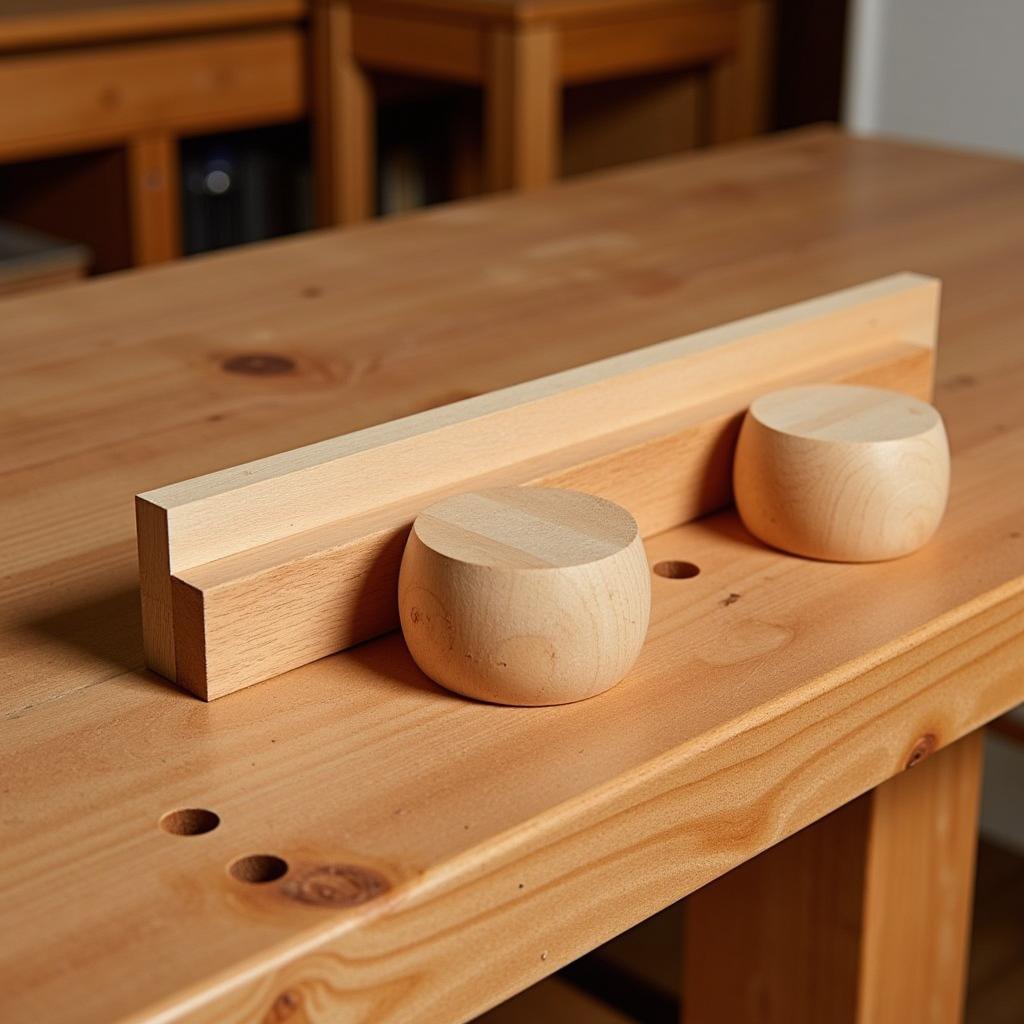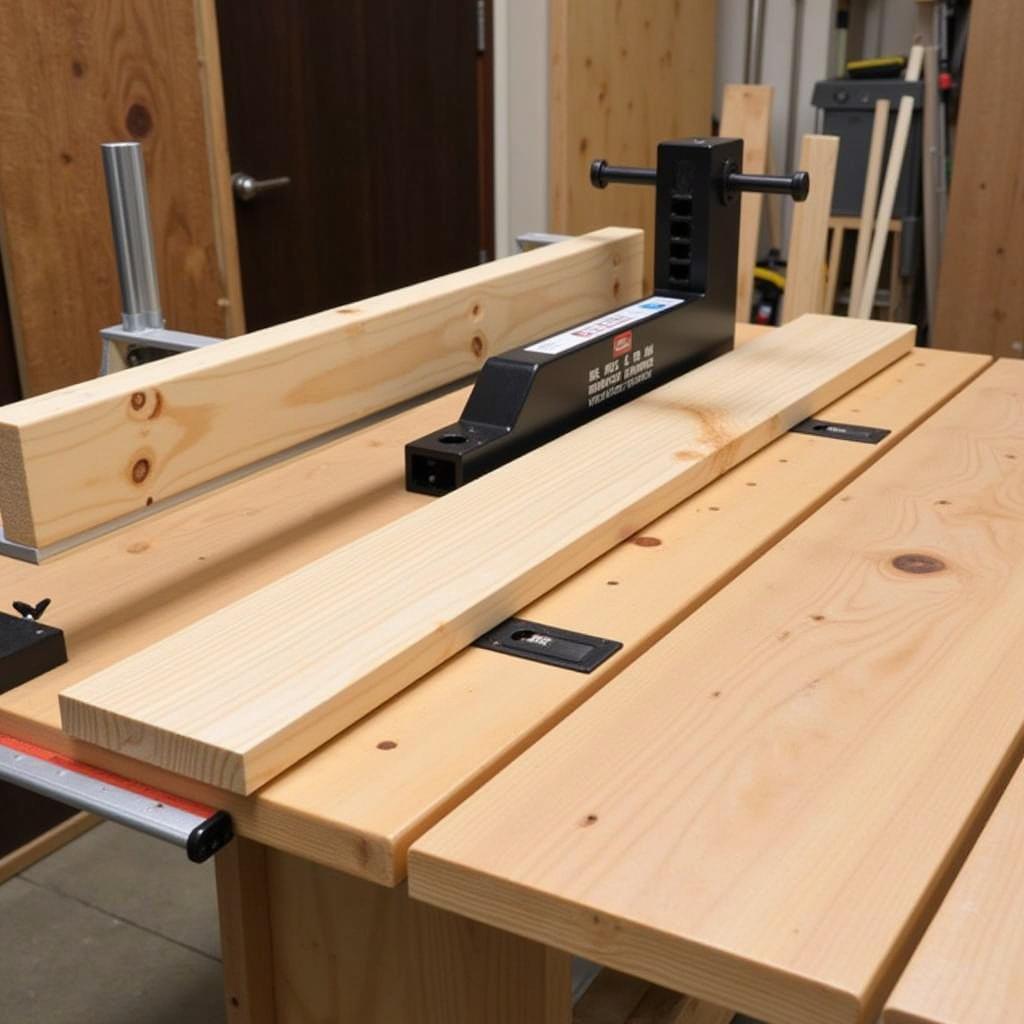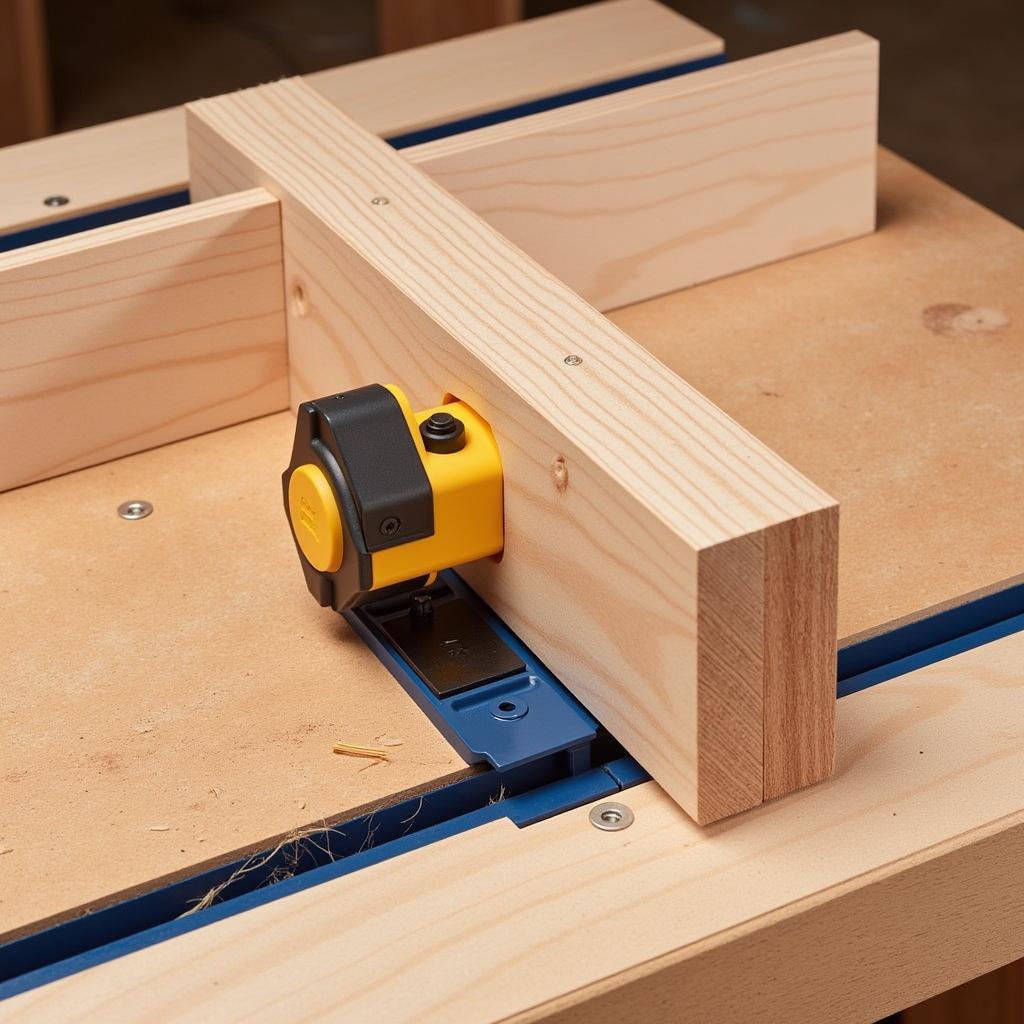Bench Dogs Fence: The Ultimate Guide to Understanding and Choosing the Right One
October 27, 2024Bench dogs are an essential part of any woodworking workbench. They provide a solid and reliable way to secure your workpiece, allowing you to work more efficiently and accurately. But with so many different types of bench dogs and fences available, it can be tough to know which one is right for you.
This comprehensive guide will explore everything you need to know about Bench Dogs Fences, from their different types and functionalities to their benefits and how to choose the right one for your needs. Whether you’re a seasoned woodworker or just starting out, this guide will equip you with the knowledge to make an informed decision and enhance your woodworking experience.
Types of Bench Dogs and Fences
Traditional Bench Dogs
 Traditional bench dogs securely holding a wooden plank on a workbench
Traditional bench dogs securely holding a wooden plank on a workbench
Traditional bench dogs are typically round or square pegs that fit into corresponding holes drilled into your workbench. They’re incredibly versatile and can be used for a variety of tasks, from planing and sawing to chiseling and sanding. They work by applying pressure against the workpiece, holding it securely in place.
Adjustable Bench Dogs
 Adjustable bench dog fence system in action on a workbench
Adjustable bench dog fence system in action on a workbench
For greater flexibility, adjustable bench dogs are an excellent choice. These typically feature a threaded rod that allows you to adjust the height of the dog, providing more precise clamping pressure. This is particularly useful when working with workpieces of varying thicknesses.
Bench Dogs with Clamps
 Bench dog with an integrated clamp holding a workpiece securely for intricate work
Bench dog with an integrated clamp holding a workpiece securely for intricate work
Some bench dogs come equipped with integrated clamps, offering even more versatility. These clamps can be adjusted independently of the bench dog, allowing you to secure workpieces at different angles and positions. This makes them ideal for more intricate woodworking tasks.
Benefits of Using a Bench Dog Fence System
A bench dog fence system can significantly enhance your woodworking experience, offering numerous benefits:
- Improved Accuracy: A bench dog fence provides a reliable reference point for making accurate cuts and measurements, resulting in a more professional finish.
- Enhanced Stability: By securely holding your workpiece in place, bench dogs prevent it from shifting or moving during work, reducing the risk of errors and injuries.
- Increased Efficiency: With your workpiece held securely, you can work more efficiently, completing tasks faster and with less effort.
- Versatility: Bench dog fence systems can be used for a wide range of woodworking operations, making them an invaluable addition to any workshop.
Choosing the Right Bench Dog Fence System
Consider these factors when selecting a bench dog fence system:
- Type of Workbench: Ensure the bench dogs are compatible with the size and spacing of the dog holes on your workbench.
- Types of Projects: The type of woodworking projects you typically undertake will influence the best bench dog system for your needs.
- Budget: Bench dog fences come in a variety of price ranges, so it’s important to choose one that fits your budget.
Conclusion
A bench dog fence system is an indispensable tool for any serious woodworker. By providing a secure and reliable way to hold your workpiece, it improves accuracy, enhances stability, increases efficiency, and offers exceptional versatility. By carefully considering the factors outlined above, you can choose the right bench dog fence system that best suits your woodworking needs and elevates your craftsmanship to the next level.
FAQs
Q: Can I use bench dogs with a workbench that doesn’t have dog holes?
A: While traditional bench dogs require pre-drilled dog holes, you can find bench dog systems that clamp onto the workbench surface, eliminating the need for pre-existing holes.
Q: What is the ideal spacing between bench dogs?
A: The ideal spacing depends on the size of your workpiece, but a general guideline is to space them no further apart than the length of your hand plane.
Q: Are metal or wooden bench dogs better?
A: Both materials have their pros and cons. Wooden bench dogs are more forgiving on delicate workpieces, while metal bench dogs offer greater durability and longevity.
Q: Can I use a vise instead of a bench dog fence system?
A: While a vise is suitable for holding certain workpieces, it lacks the versatility and adaptability of a bench dog fence system, especially for larger or irregularly shaped pieces.
Get in Touch
For all your bench dog fence needs and expert advice, contact us:
Phone: +84 915 117 113
Email: [email protected]
Address: To 3 Kp Binh An, Phu Thuong, Viet Nam, Binh Phuoc 830000, Vietnam
Our dedicated customer support team is available 24/7 to assist you.